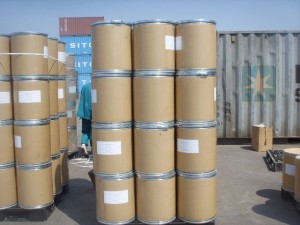Cellulose ethers
Cellulose ethers are a family of polysaccharides that are derived from cellulose, the most abundant natural polymer on earth. They are water-soluble and have a wide range of applications in various industries, including food, pharmaceuticals, cosmetics, and construction. In this article, we will discuss the properties, production, and applications of cellulose ethers in detail.
Properties of Cellulose Ethers
Cellulose ethers have a unique combination of properties that make them highly useful in various applications. Some of the key properties of cellulose ethers include:
Water Solubility: Cellulose ethers are highly water-soluble, which makes them easy to use in aqueous systems. This property also makes them effective thickeners and stabilizers in food and pharmaceutical formulations.
Film-Forming Properties: Cellulose ethers can form clear, flexible, and strong films when they are dissolved in water. This property is useful in the production of coatings, adhesives, and films.
Chemical Stability: Cellulose ethers are chemically stable and resistant to microbial degradation, which makes them suitable for use in various industrial applications.
Non-Toxicity: Cellulose ethers are non-toxic and safe for use in food, pharmaceuticals, and personal care products.
Production of Cellulose Ethers
Cellulose ethers are produced by modifying cellulose through chemical reactions with different functional groups. The most common types of cellulose ethers include:
Methylcellulose (MC): Methylcellulose is produced by reacting cellulose with methyl chloride and sodium hydroxide. It is widely used as a thickener and stabilizer in food and pharmaceutical formulations.
Hydroxypropyl Cellulose (HPC): Hydroxypropyl cellulose is produced by reacting cellulose with propylene oxide and hydrochloric acid. It is used as a binder, emulsifier, and thickener in food, pharmaceutical, and personal care products.
Ethylcellulose (EC): Ethylcellulose is produced by reacting cellulose with ethyl chloride and sodium hydroxide. It is used as a binder, film-former, and coating agent in the pharmaceutical and personal care industries.
Carboxymethyl Cellulose (CMC): Carboxymethyl cellulose is produced by reacting cellulose with chloroacetic acid and sodium hydroxide. It is used as a thickener, stabilizer, and emulsifier in the food, pharmaceutical, and personal care industries.
Hydroxyethyl Cellulose (HEC): Hydroxyethyl cellulose is produced by reacting cellulose with ethylene oxide and sodium hydroxide. It is used as a thickener, stabilizer, and emulsifier in the food, pharmaceutical, and personal care industries.
Applications of Cellulose Ethers
Cellulose ethers have a wide range of applications in various industries, including:
Food Industry: Cellulose ethers are widely used as thickeners, stabilizers, and emulsifiers in food formulations. They are used in products such as ice cream, sauces, dressings, and baked goods.
Pharmaceutical Industry: Cellulose ethers are used as binders, disintegrants, and coatings in pharmaceutical formulations. They are used in tablets, capsules, and other solid dosage forms.
Personal Care Industry: Cellulose ethers are used as thickeners, stabilizers, and emulsifiers in personal care products such as shampoos, lotions, and creams.
Construction Industry: Cellulose ethers are used as water-retaining agents, thickeners, and binders in construction materials such as cement, mortar.

Post time: Mar-01-2023
